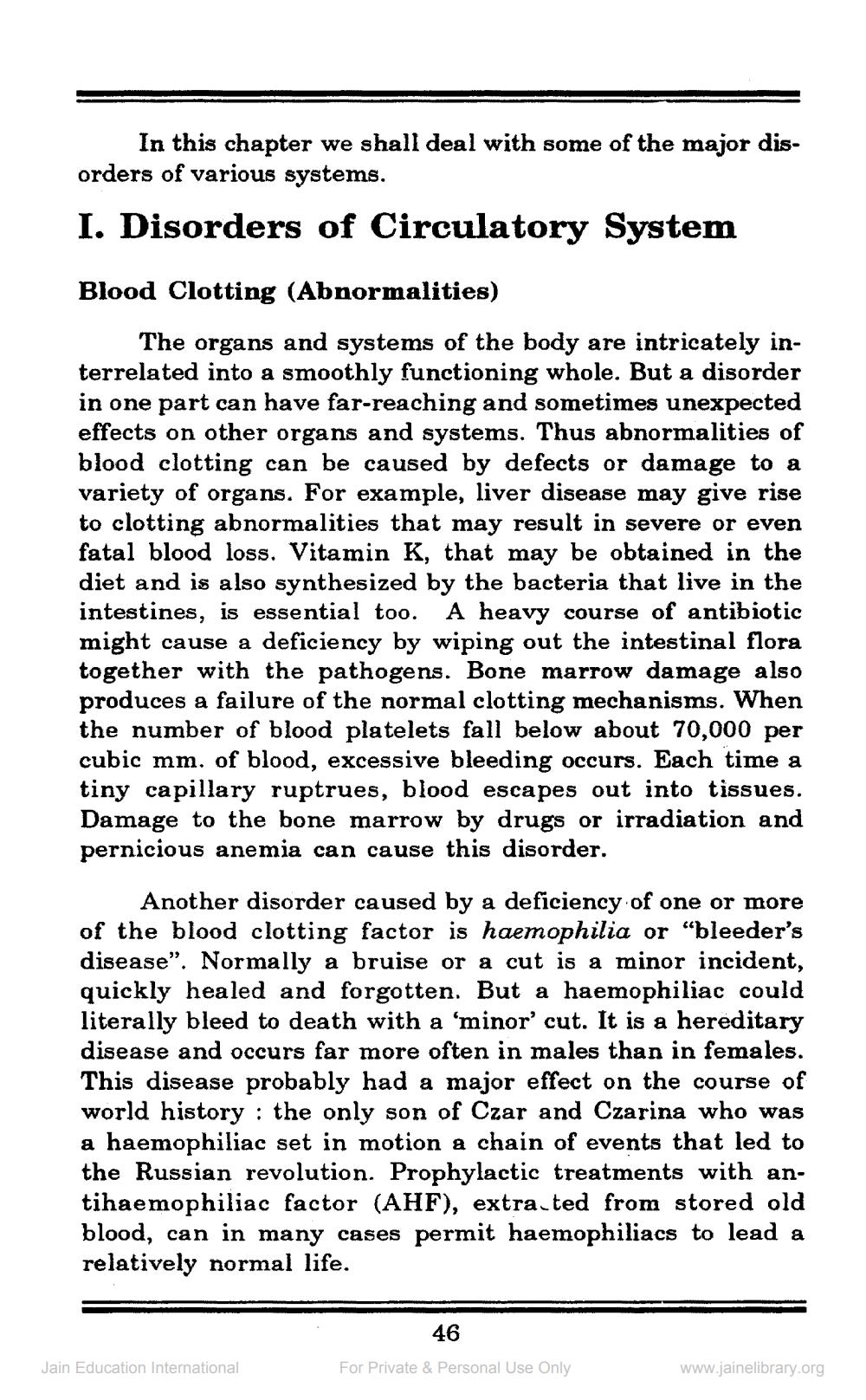________________
In this chapter we shall deal with some of the major disorders of various systems.
I. Disorders of Circulatory System
Blood Clotting (Abnormalities)
The organs and systems of the body are intricately interrelated into a smoothly functioning whole. But a disorder in one part can have far-reaching and sometimes unexpected effects on other organs and systems. Thus abnormalities of blood clotting can be caused by defects or damage to a variety of organs. For example, liver disease may give rise to clotting abnormalities that may result in severe or even fatal blood loss. Vitamin K, that may be obtained in the diet and is also synthesized by the bacteria that live in the intestines, is essential too. A heavy course of antibiotic might cause a deficiency by wiping out the intestinal flora together with the pathogens. Bone marrow damage also produces a failure of the normal clotting mechanisms. When the number of blood platelets fall below about 70,000 per cubic mm. of blood, excessive bleeding occurs. Each time a tiny capillary ruptrues, blood escapes out into tissues. Damage to the bone marrow by drugs or irradiation and pernicious anemia can cause this disorder.
Another disorder caused by a deficiency of one or more of the blood clotting factor is haemophilia or "bleeder's disease". Normally a bruise or a cut is a minor incident, quickly healed and forgotten. But a haemophiliac could literally bleed to death with a 'minor' cut. It is a hereditary disease and occurs far more often in males than in females. This disease probably had a major effect on the course of world history: the only son of Czar and Czarina who was a haemophiliac set in motion a chain of events that led to the Russian revolution. Prophylactic treatments with antihaemophiliac factor (AHF), extracted from stored old blood, can in many cases permit haemophiliacs to lead a relatively normal life.
Jain Education International
46
For Private & Personal Use Only
www.jainelibrary.org




